Easy Ways to Remove Fleas on Hardwood Floors Fast
“How to get rid of fleas on hardwood floors?” is a question many people ask when they have a problem with fleas. But you don’t need to worry anymore! Your problems will be solved here, perfectly and permanently.
Since fleas cause many troubles to your life and are harmful to your pets, you should deal with them quickly before the situation worsens. Scroll down a bit, and my below instructions can help you out.

Why Do Your Hardwood Floors Have Fleas?
There are several answers that help to explain the existence of fleas in your house. First is your pets. When you take them out for walks, fleas, which live in the overgrown grass and moist, humid bushes, can jump onto their fur and then latch on your floors.
But not only from your pets, but fleas can also jump over your window and invade your home. Stray animals (birds, squirrels) around your living areas can also be the mediators that bring fleas into your home.
How To Know That Fleas Has Invaded?

Usually, it’s pretty tough to detect the signs of fleas on your hardwood floors when it is just at first few stages. Whenever you realize that your floors have been invaded with fleas, they are severely ruined already.
Don’t try to find fleas with your bare eyes; they are so minuscule that you might need magnifying glasses to see them. Take a look at these below notes to early detect them:
- Your pets’ weird action
The last purpose of fleas when invading your house is to parasitize your pets. Therefore, if you see them scratching themselves constantly, you might check their conditions and the floors. Their eyes can show some signs of itchy red circles, too. - Fleas traces (fleas dirt, eggs)
They will leave traces wherever they temporarily live. If you clean your floors often, but there are always white, small granules (their eggs) or something that looks soil-like appear on your floors, it’s maybe the sign of fleas.
These insects are super quick; if you don’t get rid of them immediately after seeing the signs, they might spread to all your house in a few days.
Several Ways To Deal With Fleas On Your Floors
Dealing with fleas is not that challenging, and anyone can accomplish it at home. Before turning to the next section of instructions, I suggest you remove all your furniture and floor decorations like (couches, chairs, rugs, carpets, and so on) first.
These pests can jump well; removing your furniture can prevent them from hiding inside those and coming back at no time after that.
Special Note: Choosing The Right Vacuum Cleaner
On this list, you will have to use vacuum cleaners a lot. If you choose the wrong type, it will severely ruin the look of your floors with scratches or else. These are some suggestions to choose the right item for vacuuming.

- Small/compact and handy
The smaller vacuum cleaners can be easier to move all over the floors and clean every edge.
- Excellent suction power
Fleas and their eggs can hide deeply inside the edges or corners of your hardwood floors; therefore, using a vacuum cleaner with excellent suction power can help make all of them out of the nests.
- No rolling/rotating brushes
Although rotating brushes help a lot with taking almost all the dirt on your floors, even at the places you can not reach by brooms, they will scratch your hardwood floors. If your vacuum cleaner has this, turn it off before vacuuming.
- Have rubber wheels or padding
These things will help avoid any unexpected marks/scratches or permanent harm caused by vacuum cleaners. Ensure your wheels work well, or it will affect the process.
Suggested vacuum cleaners: After all of that, a canister (with long, oval floor brush attached) and upright vacuum cleaners (no beater bars/rotating brushes) are the best options to work with your hardwood floors.
1. Vacuuming And Mopping
The first method is also the most highly recommended method when dealing with fleas on hardwood floors. It doesn’t require any special chemicals or utensils, with all the basic ones that you can find in your house.
Let’s roll up your sleeves and get to work now.
What you will need:
- A microfiber, soft mop (disposable mop)
- Water (hot and cold)
- A vacuum cleaner (referring to these above suggestions)

What to do:
Step 1: Do the suggested preparation steps as I told above, move everything on your floors to other places.
Step 2: Vacuum all over your hardwood floors at a slow pace. Ensure to cover every inch on your floors (surface/edges/injunctions)
Due to scientists, vacuuming can help get rid of 100% baby fleas or eggs and 96% of mature fleas. What a surprising number! (1)
After vacuuming, you must seal up the contents (which have fleas and fleas eggs on them) and toss them out immediately.
Step 3: Dampen your mop with water and make the “second attack” on the floors. You also need to move around thoroughly and cover all the spots on your hardwood floors.
Must-read notes: There are some more things you need to do to maximize the results.
- Wash the mop you have used to get rid of the fleas or eggs that might be stuck in its fibers.
- Use damp cloths to wipe all of your furniture surfaces at once. Every time you move to the next one, you should change your clothes, too. It is to reduce leaving or spreading fleas traces.
- Take off the covers of your furniture/decorations (sofas/cushions), together with the soft furnishings (carpets/mats/rugs), and wash them up in a washing machine with hot water mode or by hand (any ways that help with sterilization).
- Continue to do this vacuuming and mopping for a few days after that. It is to prevent the left eggs from having chances to hatch and become the next flea generation.
2. Using Pine-Sol

Pine-sol is ideal for dealing with fleas on hardwood floors, and mopping is the most effective method to use it.
What to have:
- A vacuum cleaner (referring to the suggested choices above)
- A mop
- ¼ cup of pine sol
- A bucket of clean water
Solution mix: Pour ¼ cup of pine sol into the water bucket, blend them well.
How to do:
Step 1: Slowly vacuum your hardwood floors first. This step will take off almost all the fleas and their eggs.
Step 2: Dampen the mop with the solution mix and slowly mop your floor.
Remember to cover the whole floor when moving. When the solution creeps into the gaps/cracks, it will eliminate the rest of the fleas.
3. Using Baking Soda

Not only a perfect component for various floor cleaning solutions, but baking soda can also kill fleas. Here is what you have to prepare before getting on to work:
- Baking soda
- A vacuum cleaner (referring to the suggested choices above)
How to do:
Step 1: Generously sprinkle a thick layer of baking soda on your hardwood floors.
Step 2: Simply leave it there for 45 minutes or 1 hour and let the powder do its magic.
Step 3: Do slow vacuuming all over your floors to remove all the dead fleas or the “lucky” ones. Ensure to cover every inch on your floors, including injunctions/gaps or edges.
Step 4: Remember to throw all the vacuum trash bags that have fleas after cleaning.
Side Tips: Work On Carpets And Other Fabric Furniture.
As mentioned, fleas will also stay inside your carpets, rugs, or mats. If you don’t get rid of them there, they will have chances to come back to your hardwood floors or pets. Luckily, you can use baking soda to deal with them too.
After removing fleas on the floors, let’s move to the carpets/rugs! Here are what you need:
- A hard brush
- Baking soda
- Essential oil (optional)
- A vacuum cleaner (referring to the suggested vacuum cleaners above)
You can choose any essential oil scent you like to add a lovely smell to your furniture. Simply mix 3 to 4 drops of oil with baking soda before sprinkling. If you don’t have any essential oil on hand, it is acceptable to ignore it.
How to do:
Step 1: Sprinkle some baking soda onto your carpets/rugs or other fabric furniture.
Step 2: Use a stiff brush to gently scrub where you put baking soda to make the powder creep deeper into the fiber.
Step 3: Use the vacuum cleaner and take baking soda out of the carpets/rugs or your furniture. Remember to toss the vacuum trash out right away.
4. Diatomaceous Earth

Diatomaceous earth has a remarkable ability in dehydrating, which also helps to kill fleas/flea eggs. How to use diatomaceous earth in this application? You should prepare something like this:
- Diatomaceous earth
- A vacuum cleaner
- A face mask
Note: Although diatomaceous earth causes no harm to human health, direct contact with them can cause some eye/throat irritation. Therefore, use a face mask to protect yourself!
Steps to do:
Step 1: Do the sprinkling and apply a thin layer of diatomaceous earth onto your floors or anywhere that you think has many fleas.
Step 2: Just wait! Leave the earth powder there and do it work for 2 days.
Step 3: Lastly, do the vacuuming to remove the earth and the dead fleas/ flea eggs. Never forget to toss the vacuum trash after that.
5. Using Vinegar

Fleas hate vinegar; it is the natural remedy that helps to de-activate and make fleas more agile and easier to remove.
What you will need:
- White/apple cider vinegar
- A spray bottle
- Water
- A broom/mop/vacuum cleaner
Solution mix: Follow the ratio 1:1; use 1 cup of water with 1 cup of white/apple cider vinegar. Blend them well and put them into the spray bottle before moving to the next part.
How to do:
Step 1: Spray the diluted vinegar on the areas that are suspected of having fleas.
Step 2: Leave the mixture there for a while and dry up naturally.
You can simply leave it there and don’t need to wipe the solution off your floors, but I suggest doing some sweeping or vacuuming to clean up the dead fleas and their eggs.
Note: Never use the undiluted vinegar directly on your hardwood floors; it will leave terrible stains on them.
6. Using Dish Soap

This way is more like making a fleas trap, and it will be so interesting to try once.
Something you will need:
- Dish soap (around 5 ounces or 10 tablespoons)
- A bowl/container
- 5 liters of lukewarm water (85 degrees F-100 degrees F or from 29 degrees C-37.7 degrees C)
- A lamp (filament light bulb)
Trap mix: Put the prepared amount of dish soap with warm water in a bowl/container, stir them well up, and you have gone half of the way.
How to do:
Step 1: Put the bowl of warm water and dish soap on your hardwood floors (where you think that have most fleas).
Step 2: Turn on the lamp, make sure it shines in the dish soap bowl.
Using filament light bulbs will help to maintain the temperature of the water overnight. When the fleas feel the heat that resembles the pets’ body temperature on the floor, they will think they will have a huge feast and fall in the trap.
The dish soap will increase the viscosity of the water and trap the fleas inside once they have jumped into the bowl. Dish soap is also a toxin to fleas, which will also kill them quickly. Also, because of those, bare warm water won’t work the same.
Step 3: Wait overnight and let the trap work on its own.
You should redo this every following night to get rid of all of the fleas.
Incredible! This soapy trap might be the easiest way to get rid of fleas ever!
Other Way To Use Dish Soap:
If you don’t have overnight to deal with those annoying fleas, you can try this way.
Something to prepare:
- Trap mix above (dish soap+water)
- Broom
- Soft towel/cloths
- A vacuum cleaner (referring to the suggested choices above)
How to do:
Step 1: Sweep your hardwood floors quickly to get rid of dust/dirt before applying moisture onto the surface.
Step 2: Dampen the cloth with the trapped mixture; remember to take out any excess water before wiping the areas that have fleas. Cover all the gaps or injunctions to make sure you don’t miss an inch of the floors.
Step 3: Use another damp cloth with water to clean up the soapy water residue and let the floor dry naturally.
Step 4: Use the vacuum cleaner to do the vacuuming once again afterward.

7. Using Borax
The last fleas-eliminating measure you want to do with your hardwood floors is using borax. This type of chemical will work well with adult fleas but not so well with eggs.
Here are Some Things You Should Prepare:
- Borax
- Salt/Baking soda (Depend on your choice)
- A vacuum cleaner (referring to the vacuum cleaner suggestions above)
- Eye/hand protections
- A soft-bristles broom
- Garden spreader (optional)

Powder Mixture:
Option 1: Only borax (it works, but not as effective as the other options)
Option 2: Ratio 1:1, 1 cup of borax mix with 1 cup of salt
Option 3: Ratio 1:1, 1 cup of borax mix with 1 cup of baking soda
Option 4: Ratio 1:1:1, 1 cup of borax mix with 1 cup of salt and 1 cup of baking soda (best mix)
Notes: Now, open the windows and doors to have the air circulate well in your house. Put on eye and hand protection and get on to work.
How to do:
Step 1: Do the vacuuming carefully in infested areas, focus more on the gaps/edges/baseboards or injunctions. Always toss the vacuum trash away right after vacuuming.
Step 2: Sprinkle a thin layer of the borax mixture onto the whole floor.
Use a broom to spread the powder evenly on your hardwood floor and let the powder creep into the gaps or edges. Remember to do it gently, or it will raise the powder. If the area is too big, a garden spreader will help.
Step 3: Just wait! Let the borax mixture sit on your floors for at least 6 hours or up to 2 days.
To the mixtures that contain salt, you should not let them stay on your hardwood floors for any longer than 2 days. Remember not to let the place with them be exposed to excess moisture. It will cause severe stains if you don’t pay attention.
Remember, kids and animals should be away from the areas that are using borax.
Step 4: Do the vacuuming once again with the crevice tool like previously. Also, toss the vacuum trash out after that.
Step 5: Re-do the method after a week is necessary. It will help to get rid of the “lucky” eggs that survived after the first attack. If the situation is still not improved much, you can re-do the method twice.
Notes: Borax might be less toxic than boric acid but is still contaminated. Before using borax, you should be aware of these:
- Borax can kill your trees!
Don’t use borax near your plants; it will adversely harm them. (2) Although using a tiny amount can help grow weed, you should not use it near your indoor plants.
- No borax near food!
Borax is very toxic. If you eat them, it can cause vomiting, diarrhea, nausea, and even affect your kidney. There are many side effects for your health; the tiny amount of 5mg can lead to these symptoms already. Be careful! (3)
- Keep borax away from pregnant women.
You shouldn’t use borax if there is any pregnant woman in your house. Because she will be adversely affected by any borate products leading to the slow development of the fetus or some vaginal irritations. (4)
- Never use it near your pets, especially cats.
Borax can cause stomach upset, which might also affect their kidneys, and some types of irritations like respiratory problems for cats.(5)
Covering up, you should only use this borax solution if your flea infestation is severe and there is no other option.
Don’t forget to treat the infested furniture/carpets separately and keep these mixtures away from your pets/children/your family members.
8. Applying Insecticides

Like the borax option, this method is the last way you should choose, but no one can deny its effectiveness. You should also be super careful in doing the instructions to protect your children and pets.
Insecticide requirements:
- Powder form or fog form (fog form preferred)
- Include both disodium octaborate tetrahydrate (larvae) and methoprene or pyriproxyfen (adult fleas)
You also need a vacuum cleaner to do thorough vacuuming before applying insecticides. Never forget to wear protective gear to protect yourself!
Clearly how to do:
Step 1: After vacuuming, spray it (with fog form) all over the infested areas. Don’t miss any part of the place, or the fleas can still survive and come back in no time.
Step 2: Follow the producers/manufacturers’ guidelines about things to do after applying them. But you need to ensure there is no toxic left in the areas before letting kids and pets go inside.
The Second Option With Powder Form
Use should only use this when the infestation is severely bad.
Step 1: Do a small bleach test on an inconspicuous area on your hardwood floors to see how they react to the chemicals.
Step 2: Sprinkle the powder directly on your floors and vacuum after a while of sitting.
Notes: Always Re-Do The Methods You Chose
Fleas might still be alive after the “first attack” and will come back quickly. Therefore, to any treatment above, you should repeat doing it after a few days or weeks (with vacuuming). To the things that contain dead fleas or eggs (vacuum bags), toss them out immediately.
Never Want To See Fleas On Your Floors Again? Try These 8+ Methods!
It’s better to prevent than to do the treatment. Not any type of treatment is completely safe to use. Something like borax can harm your and your pets’ health. Therefore, doing some recommended actions above can help you to prevent fleas efficiently.
1. Taking Care Of Your House’s Surrounding Areas

Fleas, as previously mentioned, like hiding and nesting in places with high humidity, mainly shrubs. As a result, trimming shrubs, trees, and weeds surrounding your home can reduce the number of dwelling places for these bothersome pests.
Repairing leaky faucets to avoid creating more damp environments or filling potholes with sand will also help remove fleas’ nests.
2. Ground Salt

Carpets/rugs or mats should also be taken care of in order to prevent fleas coming back from carpets to your hardwood floors. And using ground salt is great for that. It has a dehydrating ability that can help deal with mature fleas.
Here is something you need:
- Table salt/sea salt (don’t use Himalayan salt)
- Grinding utensils (coffee grinder/pestle and mortar)
- Vacuum cleaner (referring to the recommended choices above)
Alternative: Baking soda can be used instead of table salt.
What to do:
Step 1: Grind some sea salt or table salt you have prepared
Step 2: Sprinkle them onto the carpets.
I suggest doing this step with all the carpets/rugs in all the rooms in your house. You might not know which room has fleas and which is not.
Step 3: Do the vacuuming.
After 1 or 2 days of leaving salt on your carpets, you should do the vacuuming to clean both salt and dead fleas up. Once you are done with the work, you need to toss away the contents.
Notes: Don’t toss salt directly on hardwood floors! Leaving salt on your floors for 1 or 2 days is quite risky since it might leave stubborn stains that you need to find a way to deal with later.
The most straightforward video to use baking soda and eliminate fleas on your carpets.
3. Let’s Plant!

Not any plants can help repel fleas; they have to consist of specific oils or chemicals that are pest remedies. There are various plants like that, but I suggest growing Chrysanthemums (a daisy type), Penny Royal, spearmint, or lavender.
They will both add a green, refreshing feel to your living areas and help to prevent fleas.
4. Making Rosemary Powder

The fact that you haven’t known yet is that rosemary is a wonderful fleas repellent herb; these pests just hate this type of plant. Making rosemary into an herbal powder and using it on your floor might help you to prevent fleas invasion.
Notes: This powder is human-friendly and does not cause any irritation (if you are not allergic). But it will not kill fleas; it just helps to get fleas away from your house.
What to Have:
- A pestle + mortar
- Dried rosemary
- Dried rue
- Dried wormwood
- Dried fennel
- Dried peppermint
How to Do:
Step 1: Make the powder.
Put all the components (dried rosemary/rue and so on) into the pestle and grind them into a fine powder with the mortar.
Step 2: Do some sprinkling.
Put some rosemary powder onto your pets’ carrier/beds, carpets, or furniture, which are also the “potential nesting place” for fleas.
5. Using Herbal Oil Spray
Not only does it smell good, but this method will also work to keep the fleas away from your hardwood floors. Feel free to apply this spraying mixture near your pets or family members; it is entirely safe.

What to Have:
- A spray bottle
- A vacuum cleaner (referring to the vacuum cleaner requirements above)
- 250ml of witch hazel oil
- 2 liters of clean water
- 4 liters of vinegar
- 500ml of lemon juice
Spraying mix: Mix all the liquid components together and put them into the spray bottle.
How to Do:
Step 1: Do thoroughly vacuum over your floor once before starting with spraying. Don’t forget to throw the contents with dead fleas or eggs out.
Step 2: Remember to wash the infected, movable objects like pets’ beds/blankets or else.
Step 3: Spray the mixture heavily over the suspected areas (rugs/pet carriers/sills/floors).
6. Making Lemon Spray
This solution also prevents fleas from infesting your living area and is also easy to accomplish.

Something you Will Need:
- Spray bottle
- Thinly sliced lemon
- A pint of water ( a bit more ½ liter of water)
- A pot
How to Do:
Step 1: Add a pint of water and lemon slices into a pot, boil them up and let them chill overnight.
Step 2: Put the mixture into the spray bottle.
Step 3: Simply spray a light mist on the areas that you suspect to have fleas (pet carriers/sofas/carpets). You should not try to overdo it with spraying; moisturizing those places a bit is more than enough.
Referring to this guidance and you can make your own lemon spray to treat fleas on your dogs.
7. Covering The Gaps On Your Hardwood Floors

This method means you will decrease fleas’ hiding place and make nests on your hardwood floors. Fleas cannot survive on the floors’ surfaces; they have to hide inside the gaps/cracks and tiny holes.
Therefore, filling up or covering those gaps will leave fleas nowhere to live in your house. Now you will need to have caulk, wood filler, or putty to accomplish this task. Follow the instructions of the producer, and you can get your work done effortlessly.
8. Taking Care Of Your Pets
Fleas that invade your home are mostly brought in by your pets. If you want to decrease the number of fleas inside your living areas and take good care of your pets’ health, please treat the fleas situation on your pets, too.
There are various ways to improve the problem, such as using drops, oral medicines, or anti-flea baths. To know which way is the best for your pets, you should consult the veterinarian.
Professional guidance on how to deal with fleas on your pets (cat).
9. Cleaning Pets’ Carriers, Beds, And Blankets

Don’t forget your pet’s beds, carriers, or blankets; the fleas might hide right there (which are close to your pets).
Frequently wash those pets’ “belongings” with hot water, dry them up properly and apply some of the natural flea remedies above to have fleas away from those things, too. Stuffing some dried rosemary inside their cushions is also a great idea.
All the 8 recommended methods will help you prevent fleas invasion, and you should do one of those above frequently if you don’t want to see fleas in your house.
Remember, “prevention is much better than cure” since it might take up to 2 months to solve the fleas’ problems on your hardwood floors (it is because of fleas’ life cycle).
These Things Seem To Be Effective, But Actually Don’t!
After all the recommended methods to effectively kill and prevent fleas, the following ways/compounds will not work well in the flea-eliminating process.
Flea Bombs
It actually still works but isn’t as effective as the other methods. The fleas can quickly jump to other areas in your house to avoid the bombs and survive there.
Bleach
Bleach does kill fleas but also has adverse effects on hardwood floors, so I suggest you should never use this chemical.
Steamers
Steamers might work to kill fleas, but they will definitely harm your wood. The concentrated humidity and high temperature can adversely affect your wood floors, create fungus, mold, mildew or attract even more pests.
Brooming/Sweeping
If your hardwood floors are infested by fleas, you should stop sweeping your floors like you usually do and change to vacuuming instead. Brooming is risky since it might “help” spread the flea eggs or larvae to the surrounding areas.
Essential Oils
I admit that essential oils are excellent components to prevent or repel fleas, but they don’t kill them. I suggest using other solutions that you can choose above to eliminate fleas rather than using essential oils (they will come back in no time).
FAQs
Fleas can cause thousands of troubles to hardwood floors; therefore, you might have many other questions about this topic. If you do, the following answers to commonly asked questions will help you out!
Say Goodbye To Fleas!
Hoping the tips I have shared with you today will make fleas no longer be your aching concerns. There are several valuable tips to prevent the unwanted comeback of those insects, and you should not ignore them. Just give them a go.
Don’t forget to give a like to this article! If you have other methods to eliminate fleas on wood floors, please share them with me by leaving them in the comment section. I love to read your contributing comments and those are my biggest motivation.

References
- [online] Available at: https://www.sciencedaily.com/releases/2007/12/071217111010.htm.
- Home Guides | SF Gate.. Borax Uses for Vegetable Gardening.
- WebMD. 2021. What Is Borax (Sodium Tetraborate)?.
- Flo.health – #1 mobile product for women’s health.. Boric Acid Vaginal Suppositories: Everything You Need to Know.
- Excited Cats. 202. Is Borax Safe for Cats? What You Need to Know! – Excited Cats.
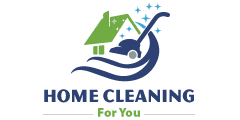
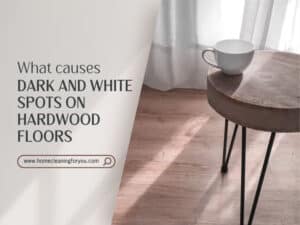
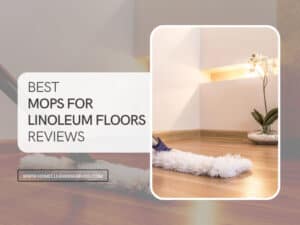
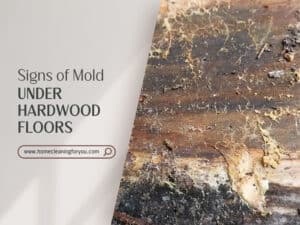
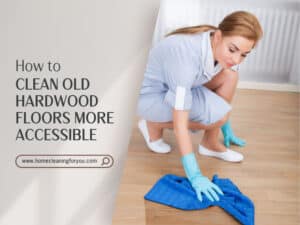
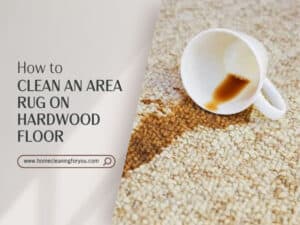
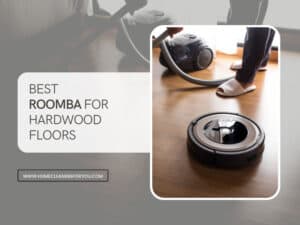
Samantha Lee
Head Cleaning Expert
Expertise
Professional Home Cleaning, Green Cleaning Techniques, Stain Removal & Fabric Care, DIY Home Maintenance & Organization, Sustainable Cleaning Products, Home Care for Busy Lifestyles
Education
University of Denver
Samantha Lee is the Head Cleaning Expert at HomeCleaningForYou.com, specializing in eco-friendly home care. She holds a Bachelor of Science in Environmental Science from the University of Denver, focusing on sustainable cleaning solutions.
With expertise in green cleaning, stain removal, and DIY home maintenance, she helps homeowners keep their spaces fresh and chemical-free. Samantha has been featured in lifestyle publications and has partnered with brands promoting natural cleaning products.
She also shares practical tips through her blog, online courses, and workshops. Passionate about sustainability, she enjoys testing new eco-friendly cleaning methods and spending time outdoors.